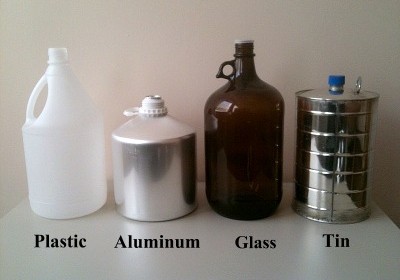We compared the weights of one-gallon bottles made of aluminum, plastic, glass, and tin. Aluminum emerged as one of the lightest bottles, second only to plastic, which has well-known environmental negatives. The weight advantages of aluminum across the value chain are clearly being recognized by some of the most innovative beer brewers around the world. The 16-Mile Brewing Company packages its beer line in aluminum bottles. According to the company, “During the initial transport to the restaurant or retailer, distributors report that with the lighter aluminum bottles they can place more cases on a pallet. This means that less shipments are needed and less trucks are on the road, thus reducing fuel consumption and emissions.” From a consumer perspective, the light weight aluminum bottles also means greater convenience and less personal energy consumption. After all, the average glass beer bottle weighs about 6-7 oz compared to 1 oz for an aluminum bottle. You can lug a lot more beers in aluminum bottles than in glass. I recently compared the weights of one-gallon bottles in glass, plastic, tin and aluminum and surmised that aluminum provides advantages in physical distribution of consumer products like beer simply because of its lighter weight. A study in Germany confirms my instincts. The Wuppertal Institute conducted a study and concluded that since the average aluminum beer can weighs less than an ounce, while a glass bottle is close to 6 ounces, the latter results in higher greenhouse-gas emissions, since heavier items need more fuel to transport. In fact, they estimate that the trucking of glass bottles generates 20 percent more greenhouse gases than aluminum cans. The analysis applies to both aluminum bottles and cans with the former having the added advantage of being resealable. Let’s hope we’ll see more beer trucks carrying aluminum bottles in the near future. 

Order Custom Aluminum Bottles
Let's get started! Contact us help you propel your brand forward.






















